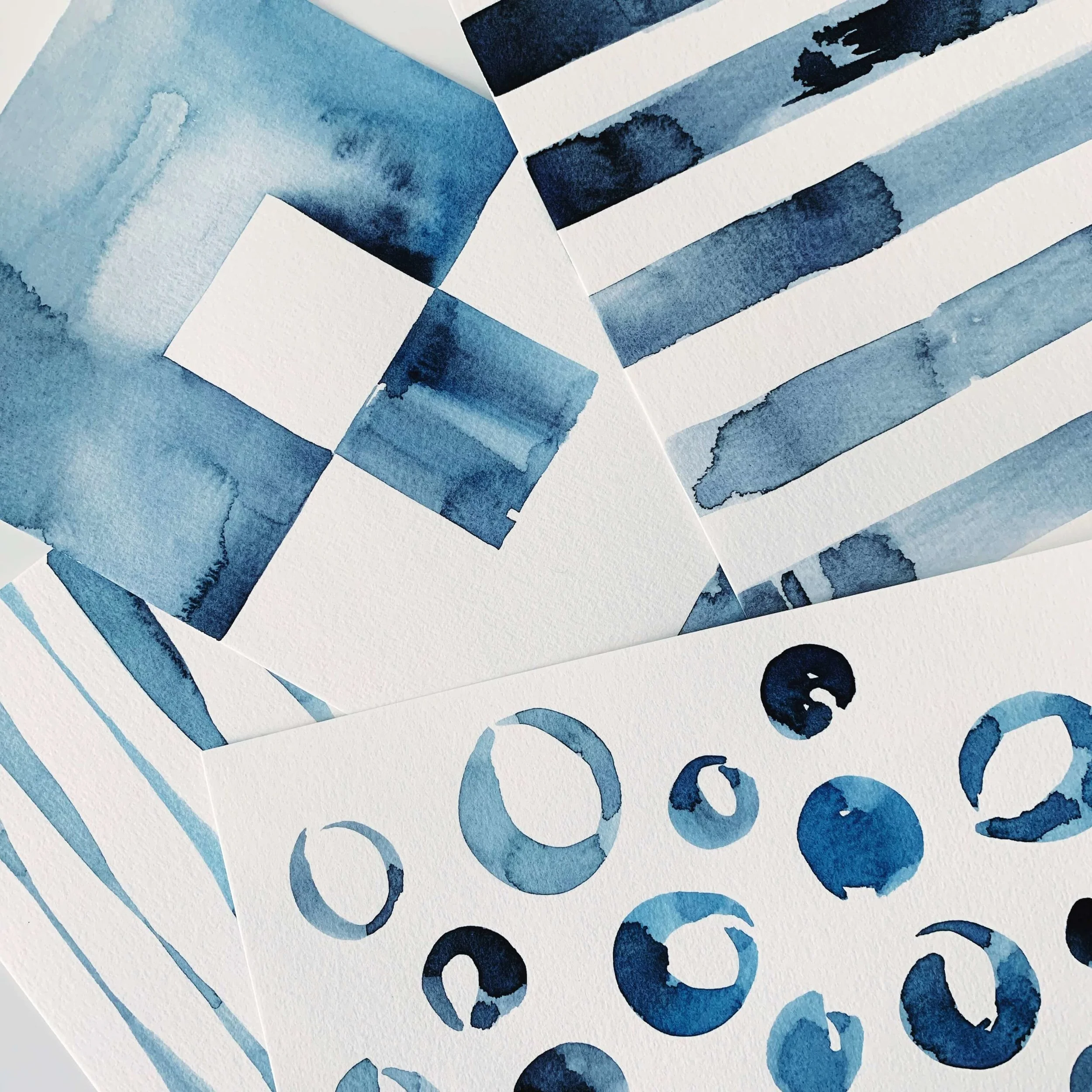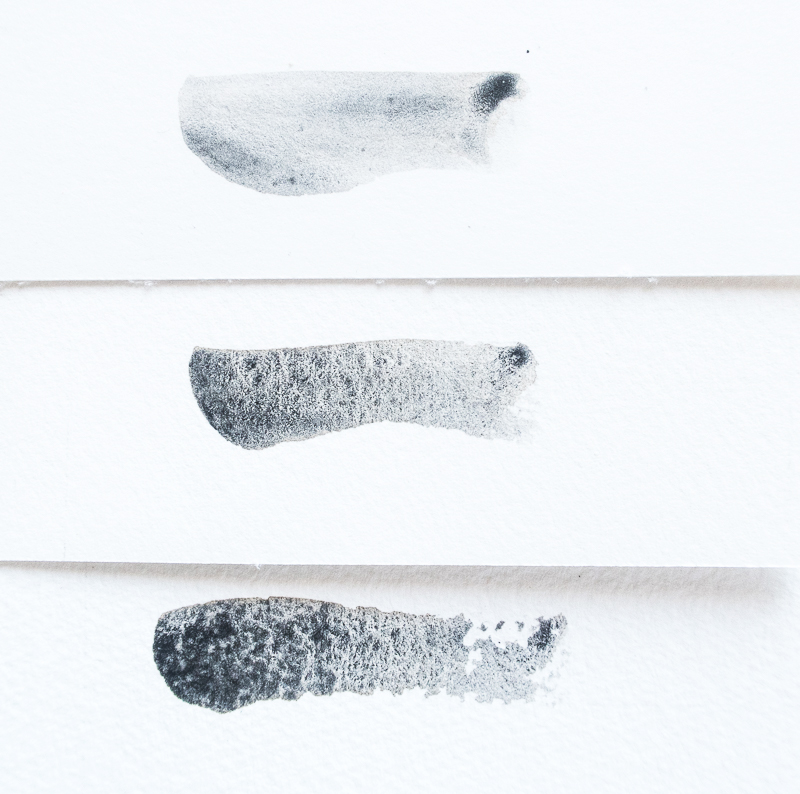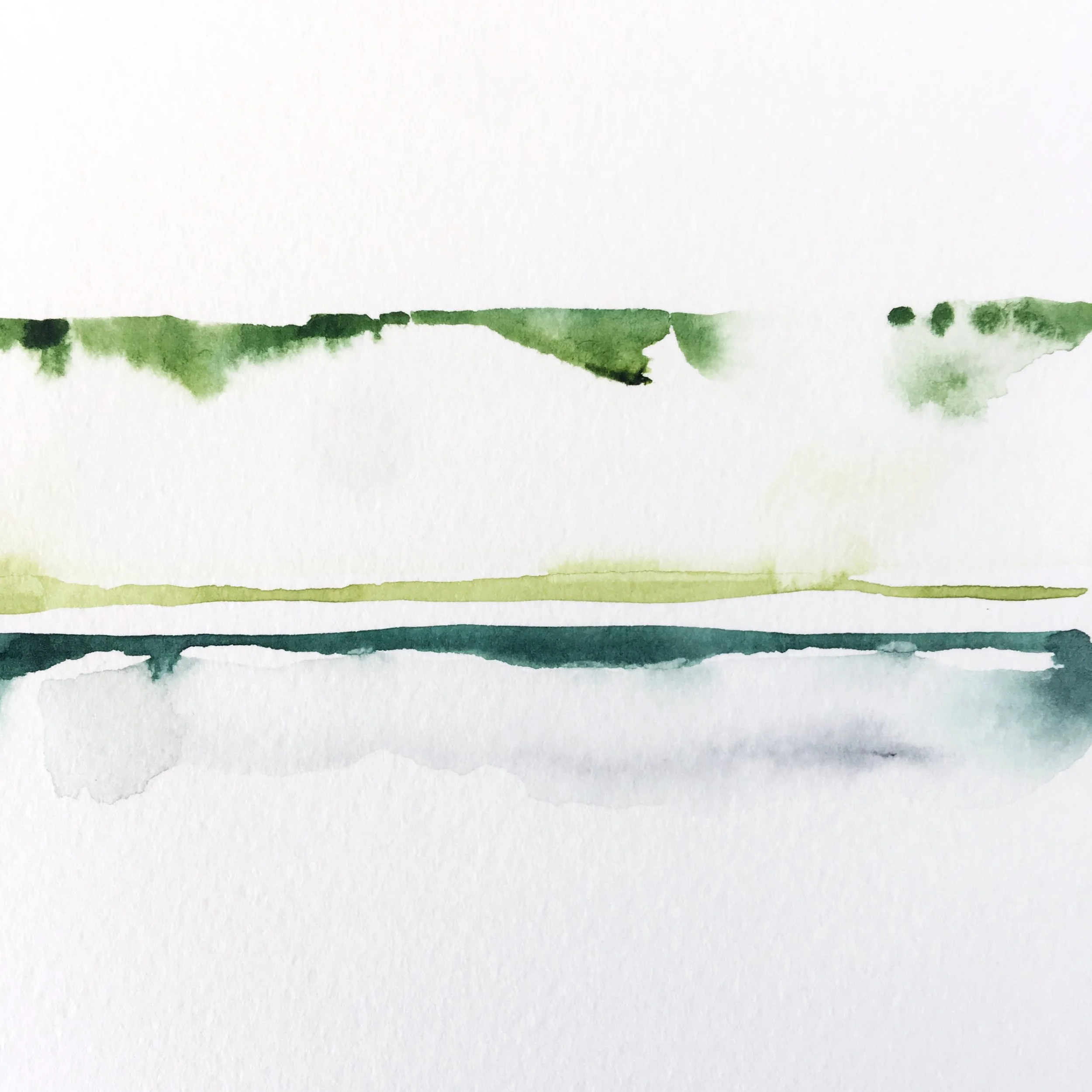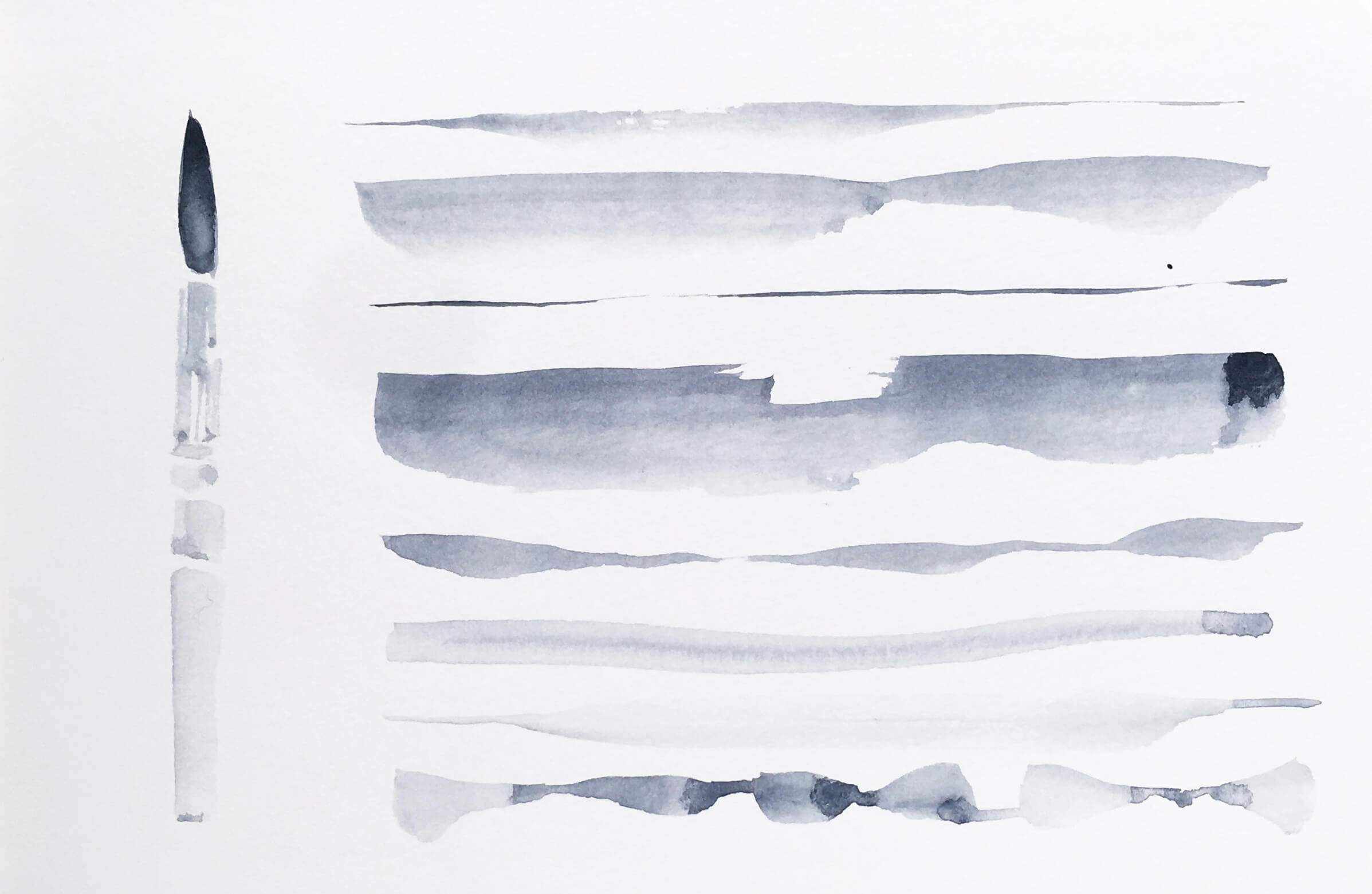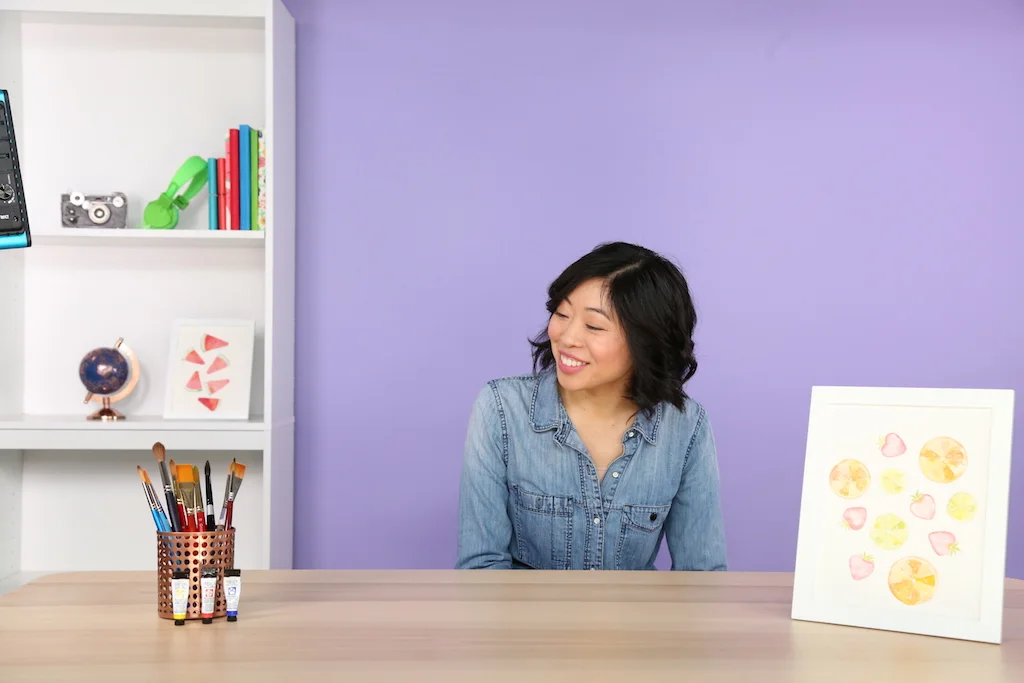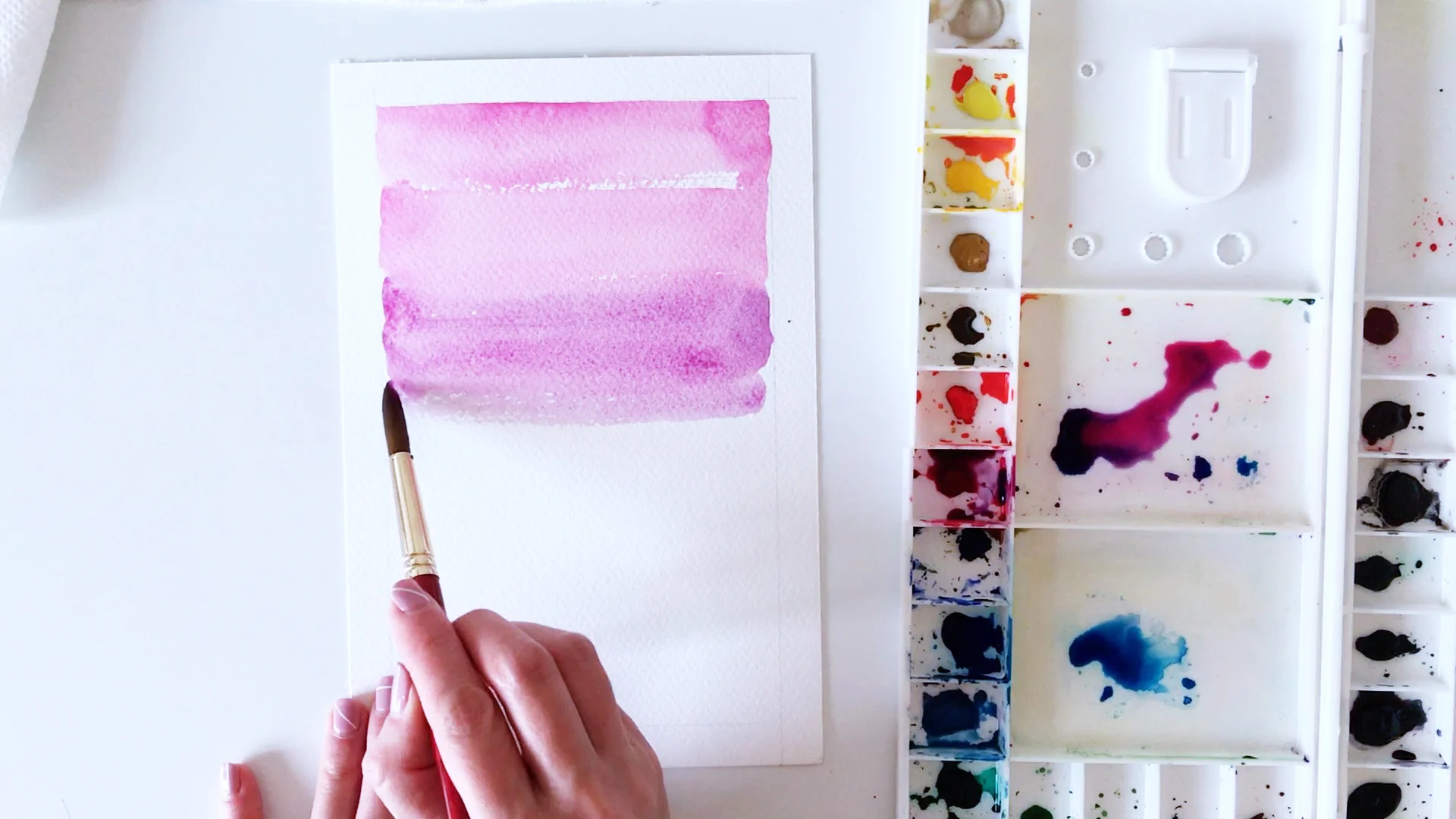Why Watercolor Is So Hard (and why you should embrace it)
Watercolor has the reputation of being difficult. It has been know to cause feelings of frustration, defeat, and disappointment. Especially for those who are just starting out and all they want is to paint something they can be proud of.
In the beginning stages of learning, we tend to take things very seriously and put our full concentration into that subject. With painting, this can manifest in the form of control. Control works well with mediums like acrylic - where the paint acts in a predictable way. It goes where you put it and the color you see on your palette is the color you get on your paper. Watercolors don’t act that way, which means that the more you try to control them, the more difficult the experience might feel.
3 Myths About Watercolors That Are Holding You Back
Since becoming immersed in watercolors through painting and teaching I’ve witnessed may hesitations that hold people back from getting started with watercolor painting. And all of them (that I’ve seen and heard) are myths.
Here are 3 common myths about watercolors I observed that hold people back.
1. I am not creative
2. I need to be able to draw
3. I should start with student grade supplies - I’m not good enough to use artist grade
Sound familiar? I wouldn’t be surprised!
The Ultimate Guide to Watercolor Papers for Beginners
If there was one watercolor supply I would say you shouldn’t skimp on, it would be paper. Good watercolor paper is, hands-down, the most important factor to success with watercolors. I think there are many others out there that would agree with this statement! I’ve read it for myself on numerous blogs, in facebook comments, and even when chatting with fellow painters.
Once you experience quality watercolor paper, it’s like a lightbulb goes off and you realize: THIS is why people love watercolor painting.
So if you’re just getting started with watercolors maybe you’ve come across terms like stretching, paper-weight, blocks, and sizing, and it seems unclear where you should start and WHY these are important. So I’ve broken down the basic aspects that are important in watercolor papers below along with a graphic summary. Hopefully this will help make sense of it so you can make more informed decisions when choosing your paper!
3 Reasons Watercoloring Is More Than Just Learning to Paint
Watercolor, simply put, is water mixed with pigment which is then applied to paper. But painting with watercolors is something entirely different. It can be complex, confusing, and fun at the same time.
Learning how to paint with watercolors is more than just watercoloring. Those of us who love it and want to keep getting better aren’t in it just to paint pretty pictures. Have you ever asked yourself why you want to learn, why you want to get better, and why it can be so rewarding? I’ve thought about it and here are 3 reasons why I think watercolors are so much more than just learning to paint.
3 Watercolor Brush Stroke Exercises to Practice Brush Control
I think of watercolors a little like modern calligraphy. It’s loose, there aren’t hard and fast traditional rules because it’s such an expressive and fluid medium. With watercolors, you can paint anything from a very loose abstract image to a super detailed photorealistic painting. No matter which style, however, there are still basic principles and techniques that we need to understand in order to be able to paint with watercolors.
One foundational skill in watercolors is understanding your brush, the strokes it can make, and how to handle it. In this post, I’m going to share 3 brush stroke exercises that you can do with a round tip brush to practice control get really comfortable with the strokes and shapes your brush is capable of
Which Watercolor Paints and Colors to Buy?
One of the questions that I get asked the most is what type of paints I use. I have to start by saying that the type of watercolor paints you use come down to personal preference at the end of the day - like most things in life. But, what I can do, is share with you what my experiences have been and what my preferences are.
Now, if you’re looking for someone who has tested out a bunch of paints from a bunch of different brands and is here to lay out all the nitty gritty details and comparison notes for you…you probably should stop reading right now.
Best Watercolor Brushes for Beginners & Beyond
After going through many brands and types of brushes, I’ve narrowed it down to what I like and I’ll share them with you here so you can steer clear of wasting your money and time and just grab one or a few of these below!
I am going to divide the brush recommendations into two categories: Beginner and Beyond Beginner. If you find that you’re really into watercolors, you might want to skip to the Beyond Beginner category because these brushes are the ones I still use everyday and you might as well start with them if you think you’ll keep painting.
Filming with Brit + Co | Watercolor Painting + Digitization Class
When I received an email in my inbox from Sarah back in September 2017 asking if I’d be interested in teaching an online course for Brit+Co, I wasn't sure if it was real at first! I tend to believe that we all have some degree of imposter syndrome and it certainly is bound to kick in when a company like Brit+Co reaches out to you. I definitely had a few thoughts cross my mind like: 'Are they really asking ME?' and 'Can I really do this?' On top of that, anyone that knows me, knows I would much rather be behind the camera than in front of it and don’t prefer being the center of attention. But I gave it some thought and reminded myself that we learn the most when we feel uncomfortable and push our own boundaries - so I agreed.
Gradient Watercolor Background Experiments
Hake brushes have been on my mind lately. I’m *this* close to buying one, it’s in my shopping cart on dickblick.com and I just haven’t let myself purchase it yet. If you don’t know what a hake brush is, they are large wash brushes that hold lots of water. In my dreams, I want to use it to prep a big sheet of paper with water so I can paint soft blue watercolor skies with fluffy clouds.
Until that happens I decided I should experiment with some gradient washes because it’s not something that I normally paint. These gradient washes make really nice backgrounds to letter on top of or can be scanned and used as backgrounds for digital designs too.
My Creative Process
I was recently asked what my creative process is and I had to stop and think about it before I could come up with an answer. It’s probably because my creative process is not something that I’ve been developing for a long time. I feel like I really just started being intentional about it in the last year, actually.
At the time, I answered that it starts with cleaning up my space so I feel prepared to sit down and create. But after thinking about it some more, there are two other parts to the process that come way before cleaning and go deeper than just than tidying up the pens and loose papers on my desk.
5 Types of Watercolor Charts: Overview
I know we can find examples of these color charts as visual images all over the internet but without some sort of explanation to accompany them, I found it pretty confusing! In fact, when I began studying them, what I thought was a basic color chart turned out not to be so basic after all.
Now that we’ve got them all sorted out in a blog series, I’ll summarize them each here with a photo, a name, and a sentence about why you’d want to study and paint them for yourself.
5 Types of Watercolor Charts - Type 5: Two Color Mixing Chart
If you’ve been reading since the beginning of this watercolor chart series, you may have noticed that each chart type is a little more involved than the last. Each one in the series takes more time to paint and also provides us more insight into our paints.
These last charts are probably the trickiest to paint of the 5 types, but are my favorite because they give you the most information about your color mixes.

